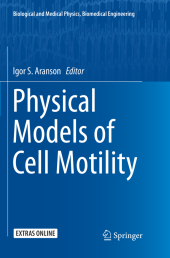 Neuerscheinungen 2019Stand: 2020-02-01 |
Schnellsuche
ISBN/Stichwort/Autor
|
Herderstraße 10
10625 Berlin
Tel.: 030 315 714 16
Fax 030 315 714 14
info@buchspektrum.de |

Igor S. Aranson
Physical Models of Cell Motility
Herausgegeben von Aranson, Igor S.
Softcover reprint of the original 1st ed. 2016. 2019. ix, 201 S. 52 SW-Abb., 9 Farbabb., 6 Tabellen, 61
Verlag/Jahr: SPRINGER, BERLIN; SPRINGER INTERNATIONAL PUBLISHING 2019
ISBN: 3-319-79629-1 (3319796291)
Neue ISBN: 978-3-319-79629-1 (9783319796291)
Preis und Lieferzeit: Bitte klicken
This book surveys the most recent advances in physics-inspired cell movement models. This synergetic, cross-disciplinary effort to increase the fidelity of computational algorithms will lead to a better understanding of the complex biomechanics of cell movement, and stimulate progress in research on related active matter systems, from suspensions of bacteria and synthetic swimmers to cell tissues and cytoskeleton.Cell motility and collective motion are among the most important themes in biology and statistical physics of out-of-equilibrium systems, and crucial for morphogenesis, wound healing, and immune response in eukaryotic organisms. It is also relevant for the development of effective treatment strategies for diseases such as cancer, and for the design of bioactive surfaces for cell sorting and manipulation. Substrate-based cell motility is, however, a very complex process as regulatory pathways and physical force generation mechanisms are intertwined. To understand the interplay between adhesion, force generation and motility, an abundance of computational models have been proposed in recent years, from finite element to immerse interface methods and phase field approaches.This book is primarily written for physicists, mathematical biologists and biomedical engineers working in this rapidly expanding field, and ca n serve as supplementary reading for advanced graduate courses in biophysics and mathematical biology. The e-book incorporates experimental and computer animations illustrating various aspects of cell movement.
Introduction.- Phase-field Description of Cell Movement.- Role of Substrate Adhesiveness.- Cytoskeletal Waves.- Chemical Signaling.- Efficiency of Cell Motion.


